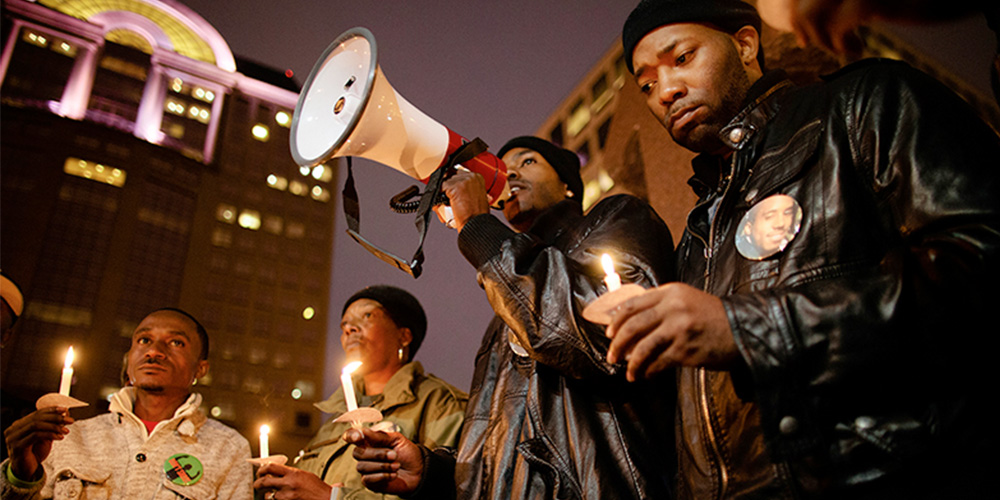Rendezvous with Madness 2017 Review: The Blood is at the Doorstep
A moving yet complicated depiction of police violence
In 2014, 31 year old Dontre Hamilton was shot fourteen times by police officer Christopher Manney. In his debut feature, The Blood is at the Doorstep, director Erik Ljung examines the case, focusing on Hamilton’s family as they react to Dontre’s murder.
Dontre, a Black man with schizophrenia, had been peaceful with Manney, as an interviewed witness attests. But moving rapidly enough to dislodge Manney’s baton, Manney reacted with extreme violence. Though Manney claimed that he had been severely beaten, evidence proves he was barely touched. Effectively, Dontre was killed because he was Black. In an attempt to protect the officer, Dontre’s mental illness became his retroactive death sentence. Schizophrenic, but not violent, and with his illness only coming to light after his murder, the shooting becomes an issue of mental health where illness itself is seen as reason enough to kill, a viable excuse for an otherwise purely racist attack.
The otherwise conventional doc is incredibly effective in allowing the Hamiltons to discuss Dontre. Their love for him, their grief at their loss, makes their already necessary critique of Manney all the more impactful. Discussing the anti-Blackness of the police force which protects Manney, as well as the stigma against mental illness which made the idea of killing a schizophrenic man seem acceptable, The Blood is at the Doorstep is a heartbreaking look at one family disenfranchised by law enforcement.
Uncomfortably, Ljung takes time to discuss the Hamilton’s distaste for the resulting protests. Dontre’s cause being taken up by the likes of Black Lives Matter, the Hamilton’s find protests becoming overly aggressive, potentially placing blame upon the protesters for the reaction to them: more police violence. This engagement in respectability politics is at odds with the rest of the film, which proves that regardless of how one behaves (Dontre had been laying down in front of a Starbucks when he was killed, and had acted without aggression), a racist police force will react with violence.
Instead of a critical gaze, or an examination of the personal desires of a single family within a broader issue, Ljung chooses to pit the angry protesters against the proper Hamiltons, who prefer to host tea parties, or sing songs in protest. While both methods of activism can be individually valid, the film has the feeling of condemning one while uplifting the other — something which seems out of place when the issue is not the people who are (rightfully) protesting, but the people who are killing them. Overall, The Blood is at the Doorstep is important in giving a voice to the Hamiltons, in its explicit depiction of police violence, and in its examination of the intersections of race and mental illness. But with its depiction of activism, one questions Ljung’s agenda. While heavily criticizing the police, showing boldly their racism and excess of power, the aspect of criticizing protest is a thorn in the side of this film.



